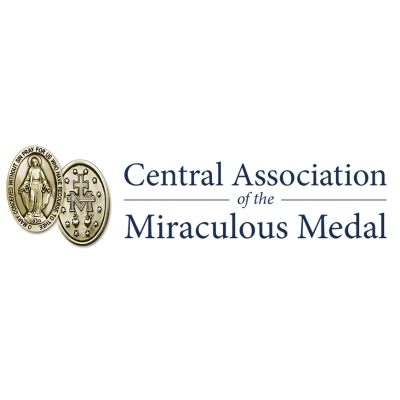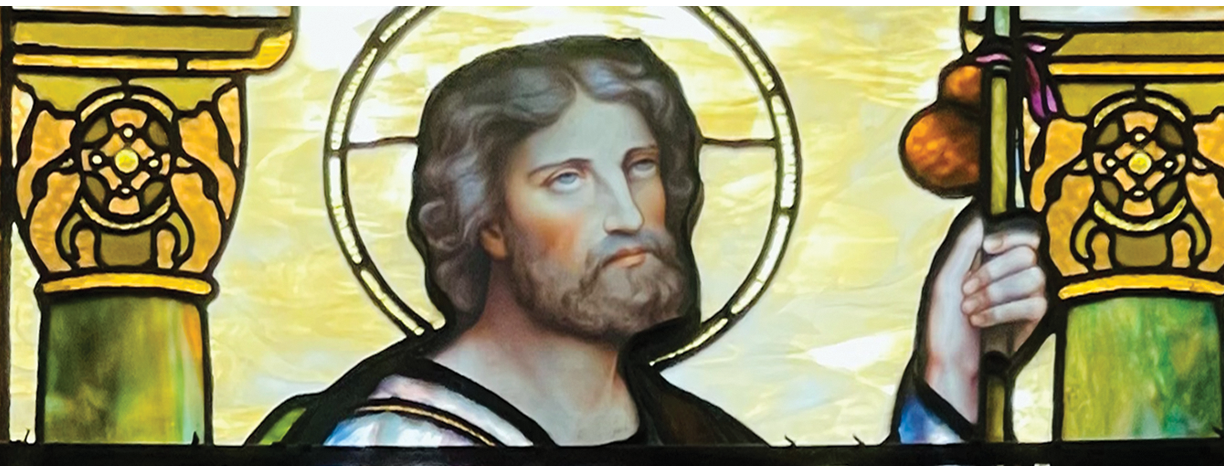Windows of the Soul
Windows of the Soul
There’s a popular saying, “The eyes are the windows of the soul.” But sometimes, the windows are the eyes, the “soul” of a building, the unspoken craftsmanship of the artisans who created them.
TELLING THE CHURCH’S STORY
Stained glass is an art form originating thousands of years ago, when books were rare, and most people were uneducated. But what most people do not know is that they served a dual purpose. While admired for their beauty, stained-glass windows helped graphically convey the church’s stories and faith to the illiterate masses. They pointed to God, His love for us, and the divine promises that await those who persevere in their faith.
That’s what the designers of the stained-glass windows at The Basilica Shrine of Our Lady of the Miraculous Medal intended. The Basilica Shrine’s windows are unique for their artistic scenes and symbolism encompass three styles: American Opalescent, Munich, and Gothic Revival. This is most notable given that most churches and shrines only house one.
Upon entering The Basilica Shrine, visitors notice the 10 windows in the main body of the church. All are American Opalescent stained glass, which was popularized by Tiffany Studios at the turn of the twentieth century. (The Basilica Shrine’s are circa 1900.) Opalescent glass is translucent and has a milky opaqueness that reflects and transmits light. The seams that hold the pieces together are incorporated into the design to make them unnoticeable.
 LOOK CLOSELY
LOOK CLOSELY
The figures depicted in the windows are graceful, and the scenes are more natural than medieval stained-glass windows. Upon closer observation, it becomes evident that some of the saints are wearing clothing made using drapery glass. This glass while molten hot, is folded resemble draped material.
The saints in these stained-glass windows are known for their significant assistance to seminarians: Sts. Agnes, Aloysius Gonzaga, Catherine of Alexandria, Francis de Sales, James, John the Evangelist, Patrick, and Thomas Aquinas.
HOLY AGONY SHRINE
On the left-hand side of the sanctuary is the Holy Agony Shrine, which houses the Sacred Heart windows. These are the oldest in the church, dating back to approximately 1890. They are made in the Munich style of stained glass, originated by F.X. Zettler and Franz Mayer. This style combined traditional elements of medieval stained glass with Renaissance artistic techniques. Notice that objects, which are closest to the viewer, are larger than those farther away. The colors of objects in the foreground are more intense than those in the distance.
Zettler was the first to meld three-point perspective in stained-glass, which adds depth to his scenes. Using larger pieces of glass enabled Zettler’s artists to achieve these techniques masterfully; the Sacred Heart window exemplifies this. Jesus appears to be stepping toward us with His left hand extending beyond the window.
GOTHIC REVIVAL
Across from the Sacred Heart windows are seven Gothic Revival windows made circa 1920. These windows portray 14 scenes from Mary’s life: the Presentation of Mary; the Betrothal of Mary and Joseph; the Incarnation; the Visitation; the Birth of Jesus; the Presentation in the Temple; the Flight into Egypt; Finding Jesus in the Temple; the Holy Family; the Wedding Feast at Cana; Mary on the road to Calvary; the Crucifixion; Pentecost; and the Assumption. These visual stories are arranged with smaller pieces of brilliant, jewel-toned glass in a variety of blues and reds. This creates a panoply of color and pattern not only in the windows, but in the light that streams through them.
Our Basilica Shrine also contains two Rose Windows, modeled after the famous Rose Window in the Chartres Cathedral in France. They, too, are the Gothic Revival style and contain the strong blue coloring known as Bernardini blue. Mary is at the center of both windows, looking up toward God with her hands in prayer.
ROSE WINDOW
The small Rose Window above Mary’s Shrine portrays eight saints devoted to Mary. The number eight is symbolic of the Resurrection (Jesus rose on the eighth day) and the joy of the blessed (Jesus gave us eight beatitudes, each of which begin with the word “blessed”). The saints depicted are: Bernard of Clairvaux, Dominic, Simon Stock, Bernadette of Lourdes, Thérèse of Lisieux, Alphonsus Liguori, Louis de Montfort, and Gabriel of Our Lady of Sorrows.
The large Rose Window (circa 1927) is located above the choir loft. Its eight smaller panels show Adam and Eve expelled from Eden; the Incarnation; the Visitation; the Birth of Jesus; the Presentation; the Miracle at Cana; the Crucifixion; and the Crowning of Mary.
In the dome above the sanctuary, seven small, medallion windows represent the Christian virtues of faith, hope, charity, prudence, justice, temperance, and fortitude. The number seven represents the seven sacraments and symbolizes perfection (on the seventh day God rested and blessed His work [Gen 2:2]. These windows are also the Munich style.


